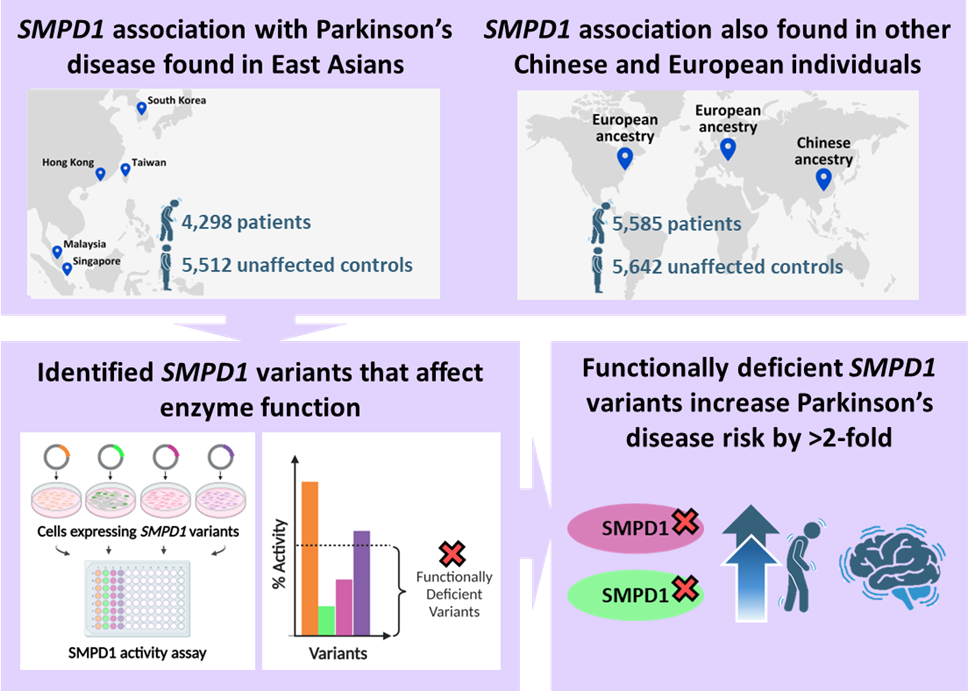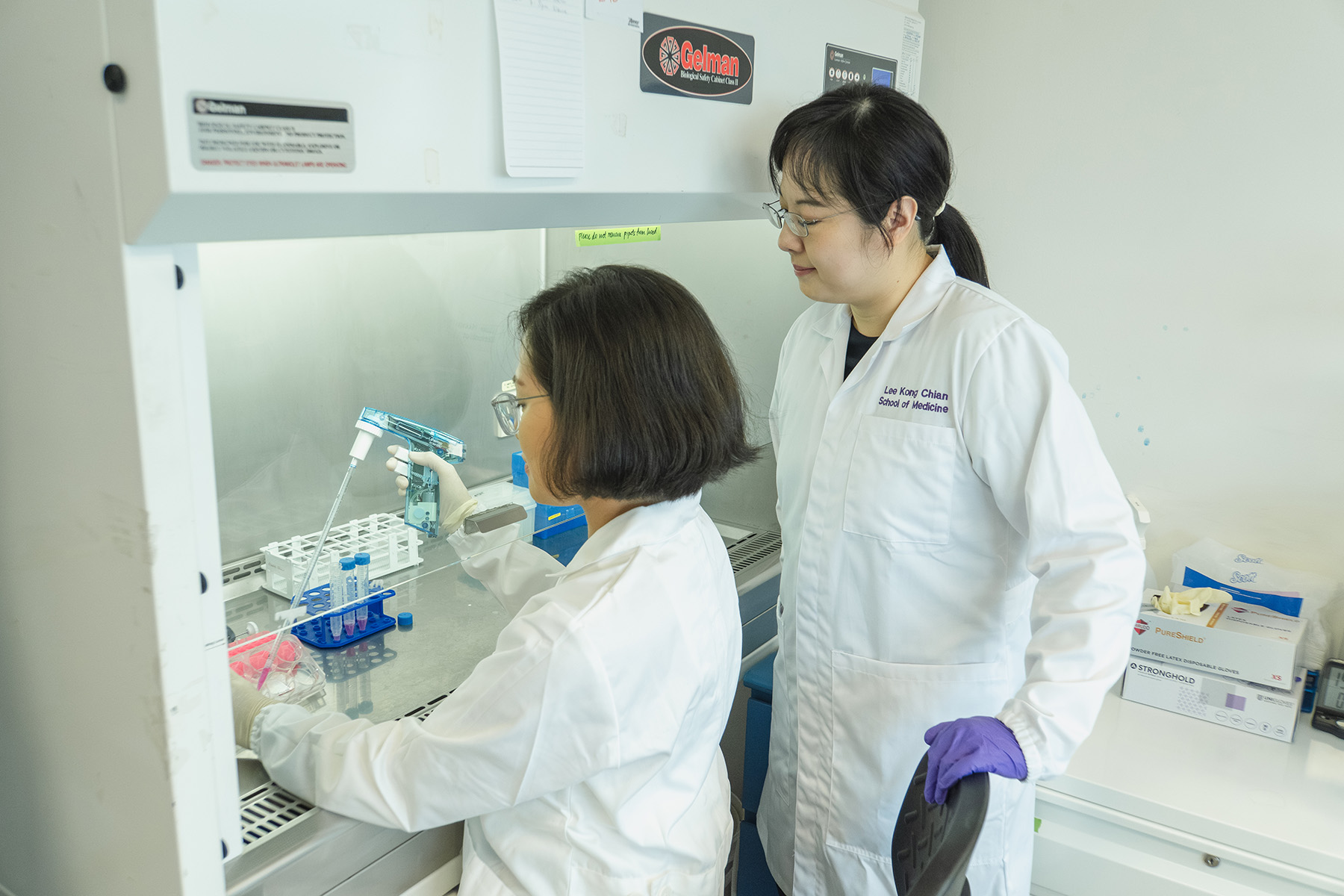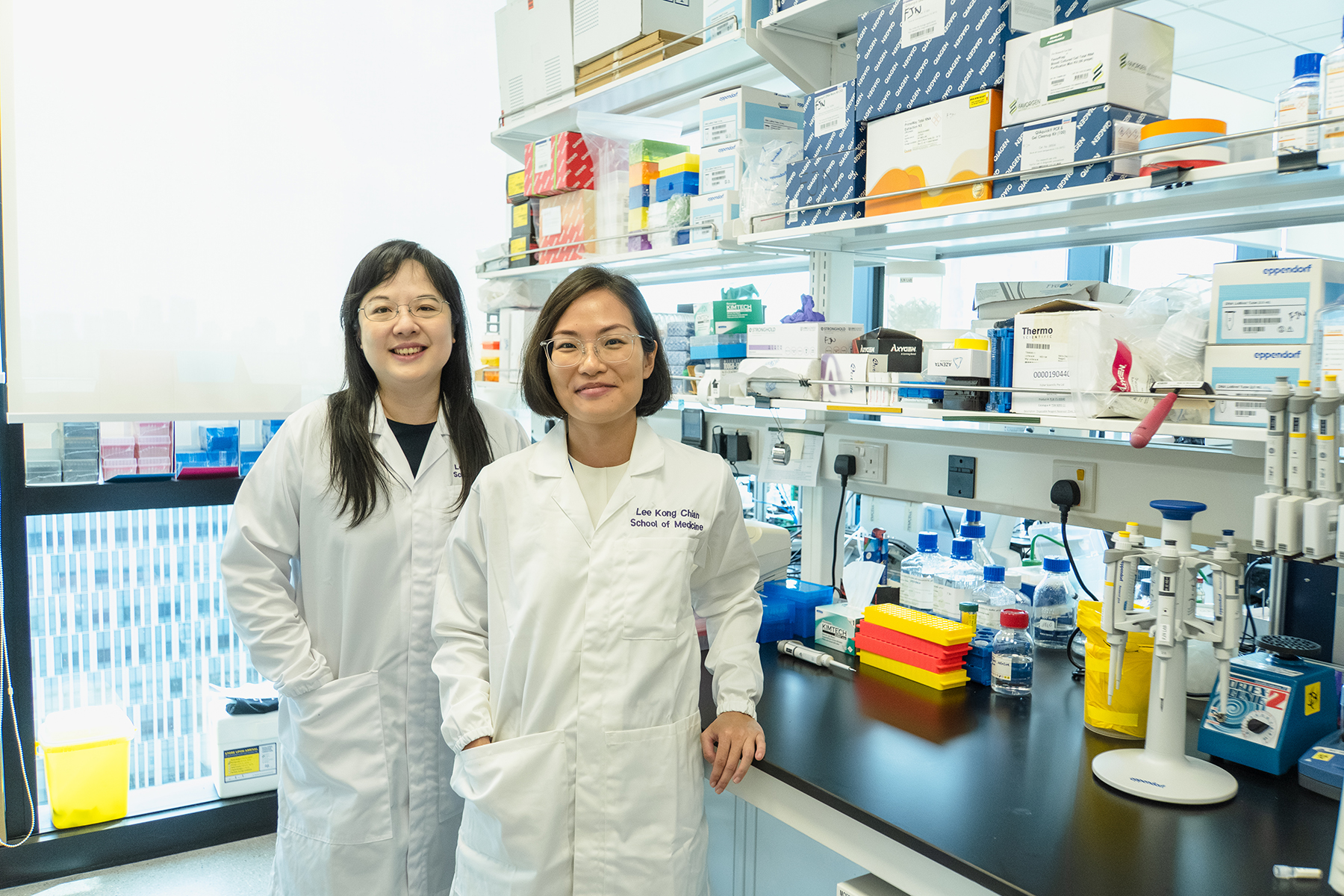Newly discovered Parkinson’s disease gene among East Asians enhances potential for early detection
A multi-institutional team from Lee Kong Chian School of Medicine (LKCMedicine), National Neuroscience Institute, Duke-NUS Medical School, and Genome Institute of Singapore has brought us one step closer to understanding the cause of Parkinson’s disease, a progressive neurodegenerative disorder.
Parkinson’s disease affects over 10 million people globally. Its prevalence is rising as the population ages, yet its causes remain unclear, and treatments focus only on alleviating symptoms. Thus, there is a pressing need for new insights and therapeutic approaches.

Approaches towards the discovery of rare SMPD1 variants that increase Parkinson’s disease risk in East Asians. Image credit: Elaine Chew
The team identified SMPD1 as a new Parkinson’s disease risk gene among East Asians, including the Chinese population in Singapore. Published in Nature Aging, this is the first study to confirm SMPD1 as a Parkinson’s disease gene among East Asians.
The SMPD1 gene encodes instructions for making acid sphingomyelinase, an enzyme found in lysosomes, which are small compartments in our cells that digest and recycle excess or unwanted substances. The presence of this enzyme is crucial in preventing dysregulation of our cells and tissues. Variants of SMPD1 create enzymes with impaired function, and more than double an individual’s risk of having Parkinson’s disease.
The discovery was made by conducting whole exome sequencing (WES), a type of genetic sequencing, on 9,810 participants from Singapore, Malaysia, Hong Kong, South Korea, and Taiwan. Findings were validated in 11,227 more participants from China, Europe and US. The team identified rare protein-altering variants in GBA1 and SMPD1 that are significantly associated with increased risk of Parkinson’s disease. While GBA1 is a well-established Parkinson’s disease risk gene, the discovery of SMPD1 is a new one, especially among East Asians.

With these results, the researchers adopted a novel approach of conducting laboratory testing on SMPD1 variants to identify specific variants that affect enzyme function. Oftentimes, computational predictions are relied upon solely for such analysis. However, the team opted for laboratory data to ensure higher accuracy, in addition to developing laboratory data to train and further improve the accuracy of computational predictions.
Co-first author of the study, LKCMedicine Dean’s Postdoctoral Fellow Dr Elaine Chew said, “The discovery of SMPD1 offers a crucial step forward in understanding genetic risk factors among East Asians, paving the way for earlier detection and intervention. Most of such exome sequencing studies have been done in European-ancestry populations. However, Europeans carry different rare SMPD1 variants from East Asians. Also, the Asian population is the largest in the world and has the greatest potential for novel genetic discoveries especially in the study of rare genetic variants."
This advancement allows clinicians to identify at-risk individuals, enabling tailored strategies to manage the neurodegenerative disorder and potentially reduce risk through early interventions.

Co-Principal Investigator LKCMedicine Assistant Professor Foo Jia Nee said, “This work was the outcome of a fruitful collaboration with Professor Tan Eng-King from the National Neuroscience Institute, Assistant Professor Wang Zhenxun from Duke-NUS Medical School and Professor Khor Chiea Chuen from the Genome Institute of Singapore and their respective teams. Our combined expertise on neurogenetics, clinical neurology, functional genomics, bioinformatics and statistics have been synergistic in achieving a deeper understanding of the findings and their broader impact on Parkinson’s Disease.”
The research team aims to further investigate SMPD1’s role in Parkinson’s disease and uncover additional genes with similar impact, contributing to a deeper understanding of this complex condition. This discovery brings hope for more precise approaches to combating Parkinson’s disease in Singapore and beyond.




.tmb-listing.jpg?Culture=en&sfvrsn=84a93c56_1)


